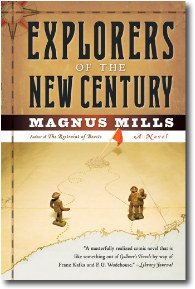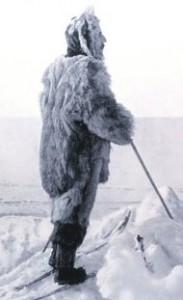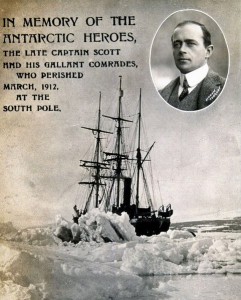“It’s so unspeakably lonely out here that I can hardly bear it at times. This endless scree, this darkness, this pitiless wind: men have been driven to distraction by lesser torments. It’s an utter wilderness.”
In 1998 , when his first novel, The Restraint of Beasts was nominated for both the Booker Prize and the Whitbread Award, Magnus Mills suddenly burst upon the literary world—and gave up his job as a London bus driver forever. In the ensuing eight years, he has published four more novels and a book of short stories, establishing a well deserved reputation for witty satire and social commentary. His short novels surprise and delight the reader at the same time that they often offer dark visions of humanity. His minimalist prose and terse dialogue complement the often bleak settings and set his messages into high relief, often accompanied by humor.
, when his first novel, The Restraint of Beasts was nominated for both the Booker Prize and the Whitbread Award, Magnus Mills suddenly burst upon the literary world—and gave up his job as a London bus driver forever. In the ensuing eight years, he has published four more novels and a book of short stories, establishing a well deserved reputation for witty satire and social commentary. His short novels surprise and delight the reader at the same time that they often offer dark visions of humanity. His minimalist prose and terse dialogue complement the often bleak settings and set his messages into high relief, often accompanied by humor.
Explorers of the New Century begins with a race between Captain Johns, a British explorer, and Tostig, a Scandinavian, as each tries to become the first man to reach the AFP, or “Agreed Furthest Point.” Mills creates obvious parallels between this race and the 1911 race for the South Pole between Norwegian explorer Roald Amundsen, who became the first to reach the Pole, and the British explorer Robert Falcon Scott, who, with his crew, died in the attempt to return to his base. From the outset, the novel is full of anticipation and excitement, as the rival crews, who have never met each other, prepare to head south with their mule caravans hauling their supplies and equipment. Johns, his ten-man crew, and twenty-three mules blaze a trail across the scree; Tostig with four men and ten mules, follows a dry river bed, a more difficult trail.

In chapters which alternate between the Johns and Tostig parties, the reader is struck by the differences. The Johns party is better equipped, with twice as many men and mules, but the Tostig camp is better organized and better disciplined. In the Johns party, petty jealousies arise, men compete for influence with Johns, personal ambitions interfere with the good of the whole, and some of the men begin to scapegoat others. The men begin to take sides and form cliques, to the detriment of the group and Johns does not always see the big picture. With Tostig, all the men can perform multiple roles, and they work together for a common goal. While Tostig’s discipline is strict and no infraction is overlooked, he is fair in meting out punishment, and he listens to his men.
 Mills’s presentation of the rush to the AFP is fascinating in its own right, as the reader sees the contrasts between the parties, enjoys the excitement of the action, and identifies with some of the participants. But there is a much bigger story here–the real reason the two groups are hurrying to the AFP. When, more than halfway through the novel, the reader discovers what it is (and any attempt to describe it here would spoil the novel), a whole new set of parallels becomes obvious. The novel ceases to be “just” an action novel, with its accompanying study of the mindset of explorers and pioneers, and becomes instead a serious analysis of twentieth century social history. Dramatically broadening his scope, Mills introduces larger themes–the arrogance of power, man’s inhumanity toward others, and the intolerance of differences–issues which have dominated twentieth century history. At the same time, he also recognizes and celebrates those moments, rare and often brief, when man succeeds in making emotional commitments to the world at large.
Mills’s presentation of the rush to the AFP is fascinating in its own right, as the reader sees the contrasts between the parties, enjoys the excitement of the action, and identifies with some of the participants. But there is a much bigger story here–the real reason the two groups are hurrying to the AFP. When, more than halfway through the novel, the reader discovers what it is (and any attempt to describe it here would spoil the novel), a whole new set of parallels becomes obvious. The novel ceases to be “just” an action novel, with its accompanying study of the mindset of explorers and pioneers, and becomes instead a serious analysis of twentieth century social history. Dramatically broadening his scope, Mills introduces larger themes–the arrogance of power, man’s inhumanity toward others, and the intolerance of differences–issues which have dominated twentieth century history. At the same time, he also recognizes and celebrates those moments, rare and often brief, when man succeeds in making emotional commitments to the world at large.

By involving the reader in the initial adventure, Mills sets him up so that when the dramatic revelation is made of what is motivating the trip south, the impact is doubly strong. Most readers will immediately recognize the parallels Mills is drawing to history and, though some readers may find the parallels to be a bit didactic, the author is careful not to violate the limits of his plot, and he does not sermonize. Darkly humorous and ironic, Explorers of the New Century is, perhaps, more political than what we have seen with Mills to date, but the message incorporated within this fable/fantasy is powerful, suggesting new ways to consider contemporary history. As Tostig comments to his crew, “Maybe a hundred years from now our steps will be retraced by men with ideas very different to our own….Explorers of the new century.”
Notes: The author’s photo and an interview with him appear on http://www.telegraph.co.uk
The photo of Roald Amundsen arriving at the South Pole is on http://www.solarnavigator.net
A memorial poster to Robert Falcon Scott appears on http://www.kidcyber.com.au
